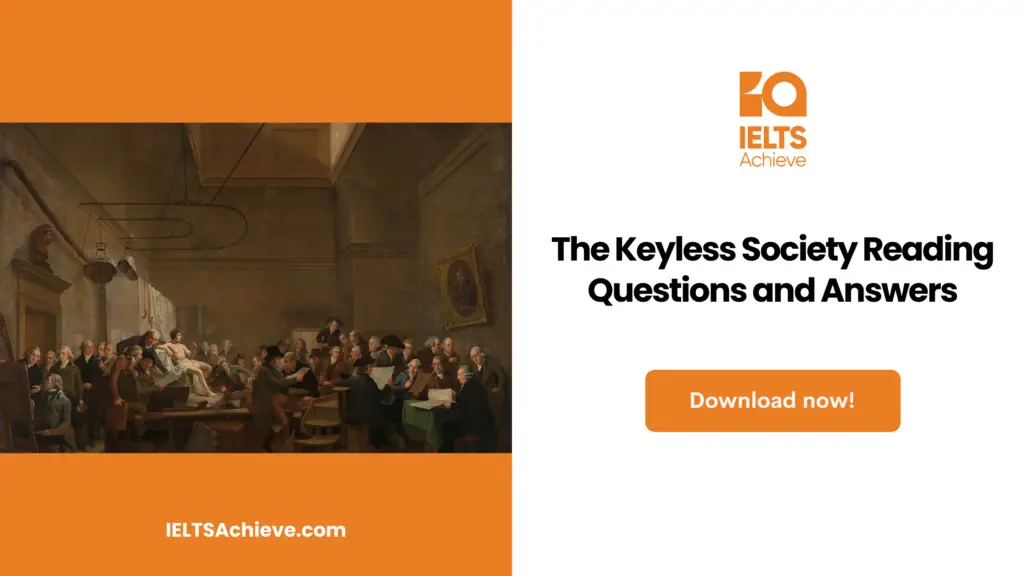The Blog post contains the following IELTS Reading Questions:
- IELTS reading matching headings
- IELTS academic reading diagram labelling
- IELTS reading matching sentence endings
Stay informed and prepared for success – Explore our comprehensive Reading Test Info page to get valuable insights, exam format details, and expert tips for mastering the IELTS Reading section.
IELTS Reading Passage: Quiet Roads Ahead

Quiet Roads Ahead
Road noise is becoming increasingly problematic. Automobile engineers have made great strides in reducing engine noise, but they have had less luck in other areas. More than half of the noise that automobiles make comes from the tires rolling over the road, and as road construction and vehicle sales continue to rise, especially in Asia and the United States, this is becoming a worldwide problem.
The World Health Organization warns that prolonged exposure to road traffic noise might cause health issues related to stress. In addition, road builders must shell out cash to establish sound barriers and install double glazing in residences where traffic noise is excessive. It’s more challenging to sell a home in a neighborhood with a lot of traffic and construction noise, and workers in those settings are less effective and productive overall.
The Netherlands, one of the most populous countries in the world, is home to scientists who are already at work on methods for making roadways quieter. The Dutch government has set a five-year goal of reducing traffic noise by an average of six decibels across the country. The idea, which was developed by Dutch mechanical engineer Ard Kuijpers, is both revolutionary and extremely promising. He set out to improve the material’s texture, hardness, and sound absorption.
A tire is more prone to vibrate and make noise over a rough surface. Heavy rollers are used by road crews to smooth down freshly laid asphalt, but Kuijpers has come up with a technique that he believes can result in the quietest road possible. It all comes down to a unique mould that’s 3 meters broad and 50 meters long, which is his little secret. Rolling over the asphalt with a heavy roller, rail-mounted equipment spreads the hot asphalt mixture into the mould. As it cures, the 10-millimeter-thick sheet will have a surface smoother than anything that can be made using more traditional techniques.
Then, he puts another layer beneath the asphalt to improve the road’s performance by making it hardwearing while still being soft enough to dampen vibrations. A layer of rubber 30 millimeters thick, along with stones slightly larger than those in the preceding layer, makes up this. Kuijpers compares it to a “big mouse mat,” which softens the pavement.
Since the pores in the road surface are a specified size, the size of the stones used in the two layers is crucial. The upper layers are just around 4 or 5 millimeters across, whereas the lower layers are roughly 9 millimeters across. According to Kuijpers, the tread (the indentations or ridges on the surface of a tire) can act as a sponge, soaking up any air that passes through it and therefore dampening any vibrations that might otherwise cause noise. Moreover, they facilitate water drainage, which can improve the road’s safety in wet conditions.
Despite the complexity of the production process, placing the surface is rather easy. It is rolled onto a drum that is 1.5 meters in diameter like a carpet as it leaves the mill. They unroll it and use bitumen to adhere it to the base on location. The white lines are added at the manufacturer as well.
The actual building of the structure employs a far more advanced method of noise reduction. It’s a concrete base with flask-shaped slots up to 10 mm wide and 30 mm deep, which are open at the top and sealed at the bottom to absorb noise. Similar to Helmholtz resonators, when sound waves of a certain frequency enter the top of a flask, they create resonances within, releasing their kinetic energy as heat in the surrounding concrete. Another crucial function served by the cavities is the removal of water that seeps through the upper surface. Waste will be flushed out, and the pores on the surface will remain clear, thanks to this circulation.
By adjusting the diameters of his resonators, Kuijpers has complete command over the acoustic signals they absorb. Given that various automobiles emit noise at various frequencies, this could be extremely helpful. Noise from car tires, for example, peaks at roughly 1000 Hz, whereas that from trucks drops to around 600 Hz. The frequencies absorbed by the concrete can be adjusted by altering the size of the Kuijpers resonators. The inside lane of a major highway is typically used by trucks, thus resonators installed there could be adjusted to absorb sounds at roughly 600 hertz, while those installed in other lanes could handle noise at higher frequencies caused by cars.
Kuijpers thinks he can reduce road noise by five decibels compared to the quietest roads available today. A one-hundred-meter stretch of his road has been tested on a highway near Apeldoorn, and the Dutch construction firm Heijmans is currently in talks with the Dutch government about selecting the site of the next roll-out road. The ultimate price tag will determine whether or not Kuijpers’ design is a financial success. Those who are disturbed by road noise, however, can look forward to quieter times in the future.
Unlock your full potential in the IELTS Reading section – Visit our IELTS Reading Practice Question Answer page now!
Recommended Questions:
Renewable Energy IELTS Reading Question with Answer
IELTS Reading Questions: Quiet Roads Ahead
Questions 1-6
Reading Passage has ten paragraphs labelled A-J
Which paragraph contains the following information?
Write the correct letter A-J in boxes 1-6 on your answer sheet.
- factors that should be taken into account when examining Kuijpers’ proposal.
- here we compile the various factors that contribute to road noise and try to explain them.
- a presentation of how Kuijpers’ road network material is transported.
- a broad statement regarding how people typically use their cars on key roadways.
- there are a number of monetary benefits to lowering road noise.
- demonstrating Kuijpers’ road-making process.
Ready to conquer Matching Headings questions? Click here to learn essential tips and techniques for matching headings accurately to paragraphs or sections in the IELTS Reading section.
Questions 7-9
Label the diagram below.
Choose NO MORE THAN ONE WORD AND/OR A NUMBER from the passage for each answer.
Write your answers in boxes 7-9 on your answer sheet.
Cross section of Kuijpers’ proposed noise-reducing road.

7. 33- ______________
8. 34- ______________
9. 35- ______________
Ready to tackle Diagram Label Completion tasks with confidence? Click here to access our comprehensive guide and learn how to accurately label parts or components of diagrams in the IELTS Reading section.
Questions 10-14
Complete the table below using the list of words (A-K) from the box below.
Write the correct letters in boxes 10-14 on your answer sheet.
Kujipers’ noise-reducing road: components and function
| Layer | Component | Function |
| Upper and Lower | Stones | • reduce oscillations caused by (10)___________. • create pores that help (11)____________. |
| Foundation | Slots | • convert to heat. (12)__________. • help to remove (13)___________. • can be adapted to absorb different (14)________. |
- resonators
- drainage
- air flow
- frequencies
- rubbish
- pores
- lanes
- dissipation
- sound energy
- the engine
- Sources
Ready to sharpen your skills in Matching Sentence Endings? Click here to discover expert strategies and techniques for accurately matching sentence endings with the corresponding information in the IELTS Reading section.
Unlock your full potential in the IELTS Reading section – Visit our IELTS Reading Practice Question Answer page now!
Recommended Questions:
Renewable Energy IELTS Reading Question with Answer
Quiet Roads Ahead Reading Answers
1. J
2. C
3. G
4. I
5. B
6. D
7. Asphalt
8. 9
9. Concrete
10. C
11. B
12. I
13. E
14. D

We hope you found this post useful in helping you to study for the IELTS Test. If you have any questions please let us know in the comments below or on the Facebook page.
The best way to keep up to date with posts like this is to like us on Facebook, then follow us on Instagram and Pinterest. If you need help preparing for the IELTS Test, join the IELTS Achieve Academy and see how we can assist you to achieve your desired band score. We offer an essay correction service, mock exams and online courses.

